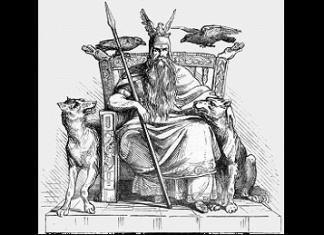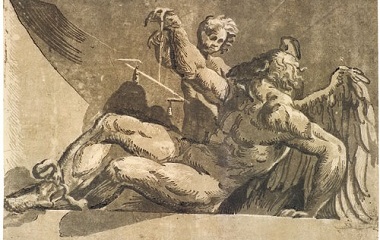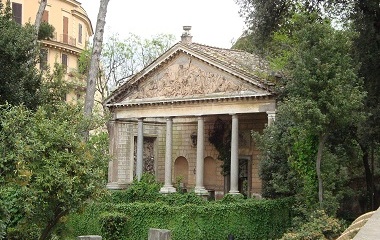- Pronunciation: sah-turn
- Origin: Originally a Greek god (Chronos)
- Also known as: Saturnus (Latin)
- Role: God of time, wealth and agriculture
- Parents: Father – Coelus (Uranus). Mother – Terra
- Spouse: Ops (Goddess of Bounty) and Lua (Goddess of Destruction)
- Offspring: Jupiter, Vesta, Neptune, Juno, Ceres and Pluto
- Symbol: scythe
Who Is Saturn?
Saturn is the Roman god of agriculture, sowing, harvest, and seeds. Interpreted as the most complex deity in Roman religion, Saturn is also perceived as the god of wealth and abundance. The sixth furthest planet from Earth is also called Saturn, and is the planet that takes the longest amount of time to complete a single orbit. It is speculated broadly that this planet was named after the god Saturn due to his relation to the Greek god Chronos, the god of time.
Characteristics
Saturn is often depicted as an older man with a long, white beard and curly hair. In some depictions, Saturn has wings. He is portrayed as strong, muscular and veiled.
Saturn was an intellectual and strong-willed god. As Saturn was in control during the Golden Age, he was linked to fertility, agriculture, strength and justice. Saturn saw all men as equal and his rule was one of fair judgement.
Related Characters
Saturn was equated by the Romans to the Greek god, Cronos. In the genealogy of Greek gods, Cronos’ character was adapted to Saturn. However, Saturn differed from Cronos because the latter—according to legend—was held in prison at Tartarus. In contrast, Saturn was believed to be one of the early kings of Rome, during the Golden Age of Roman prosperity. Saturn allegedly taught the Romans agriculture and other skills during a time of no labor and unrivaled peace.
Cultural Representation
Literature
Albius Tibullus, a Latin Poet born in 54 BCE, wrote a poem called Saturn’s Day, which eventually led to the word Saturday in English. Another poet, Catullus, called the festival named after Saturn—the Saturnalia festival—the greatest days he’d ever experienced. Macrobius, a Roman provincial who lived in the 5th century, wrote the Seven Books of the Saturnalia (Latin: Saturnaliorum Libri Septem), a significant historical resource on Roman history, mythology and critical discourse.
Visual Arts
Saturn is usually portrayed in art holding a scythe, a sickle or a pruning knife. Other times, he is pictured devouring children, due to his association with Cronos. This interpretation of him is representative of time passing and the bringing forth of new generations. On a wall in Pompeii, a painting displays Saturn wearing a white robe and a veil of the same color over his head. He holds a sickle away from his body in his right hand, appearing ready to spring into action.
Explanation of the Myth
According to legend, Saturn fled his angry father, Coelus, and took up residence in Latium, Rome. His arrival was blessed by Janus, the god of gateways, birth and death, past and future, and beginnings and ends. Along with Janus, Saturn ruled over Latium during its Golden Age, during a lengthy period of affluence and harmony. According to legend, Saturn was an immigrant god, but he was welcomed by Janus with open arms. He educated the Romans about how to farm and produce grapes and he trained them how to be civilized. Consequently, this also made Saturn the god of wealth. Under his rule, the Romans were able to enjoy the bounties of life free of labor.
Ways of Worship
Sacrifice
The Romans believed that if they made sacrifices to the gods, then the gods would reward them with favors. Saturn was one of the most frequently worshipped gods, and he often received sacrifices at his temple. Because Saturn’s characteristics derived from Chronos, sacrifices were made by worshippers to Saturn in the same manner as they were though Greek rites (ritus graeus), unlike sacrifices made to the other Roman gods. During these sacrificial ceremonies—and in contrast with the sacrifices to other Roman gods, where the head of the person sacrificing would be veiled—the head of the worshipper would not be covered. The reason why the worshipper’s head was veiled because Saturn was also perceived as the father of truth and veils were worn out of respect. Gladiatorial offerings were also made to Saturn during the month of December over a period of ten days. These were sponsored by funds from the treasury, found in the Temple of Saturn (Latin: Templum Saturni).
The Saturnalia
The Saturnalia festival, which was one of the most fundamental, popular and liveliest events in the Roman calendar, was named after Saturn. It was originally celebrated on December 17, but it was later extended to last seven days, starting on the same date but ending on December 23. This yearly festival was based on a pagan festival and was therefore held during the winter solstice. The festival consisted of all the most enjoyable aspects of other festivals—games, eating, free speech and drinking. A Mock King watched over the festival, and was known as the King of Misrule. The jovial nature of this festival led to the cessation of labor and inverted social norms. In these inverted norms, slaves were given certain freedoms, and they would reverse roles with their masters. The slaves would wear their master’s clothes and the masters would obey them. Later, the Roman Christians replaced the Saturnalia with Christmas. The celebrations were similar. The Roman Christmas was similar, and was also full of eating, drinking, gift-giving and the appearance of the King of Misrule.
Temple
In 498 BCE, the Romans built the Temple of Saturn near Capitoline Hill in Rome. Historians, however, generally disagree about the history of the site, leading to inconclusive information. Previously, this hill was known as Saturnus Mons, otherwise known as Saturn’s Mountain. Some of the temple still stands today and inscribed on the temple is “Senatus Populusque Romanus incendio consumptum restituit” (“The Senate and People of Rome restored (the Temple of Saturn) consumed by fire”). The temple remained a focal point and was restored consistently throughout the centuries. The temple was used as the Roman treasury and housed all the gold and silver, which is symbolic of Saturn’s role as the god of abundance. Allegedly, the statue inside the building was crafted from wood and was full of oil. The legs of the statue were wrapped in wool, which was only ever removed at the beginning of the Saturnalia.










